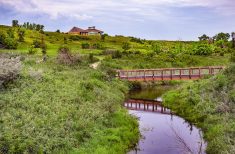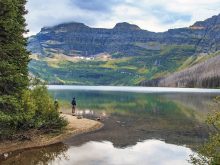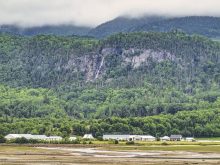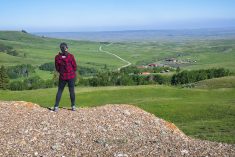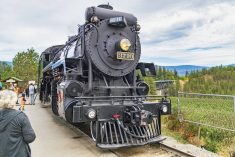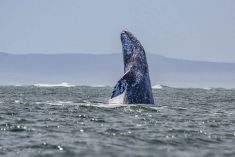The Sea to Sky Highway between Vancouver and Whistler ranks among the top scenic drives in British Columbia. Only 120 kilometres long, it packs in a lot of diversity from seaside to river valleys, rainforest, and mountain wilderness. In winter we might notice a dramatic change from green grass near Vancouver to serious snow at Whistler.
The first half of the drive winds along the shore of Howe Sound past a series of bays, coves, and scenic lookouts.
The most prominent historic site is the Britannia Mine Museum, which breaks any preconceived notions of what a mining museum might be. Visitors enter the underground mine on a train that rumbles along an early haulage tunnel. Guides explain the evolution of mining techniques and equipment, and sometimes demonstrate their operation. Open from 1904 to 1974, this was once the largest copper mine in the British Empire, with tunnels covering 210 kilometres.
Most striking is 20-story-high Mill No.3, originally used for processing minerals. It is now site of the museum’s award-winning presentation called Boom, an imaginative combination of live-action and elaborate special effects.
A little farther north, we come to Shannon Falls, the third highest falls in B.C. A short walk through old-growth rainforest leads to the falls that tumble 335 metres over granite cliffs.
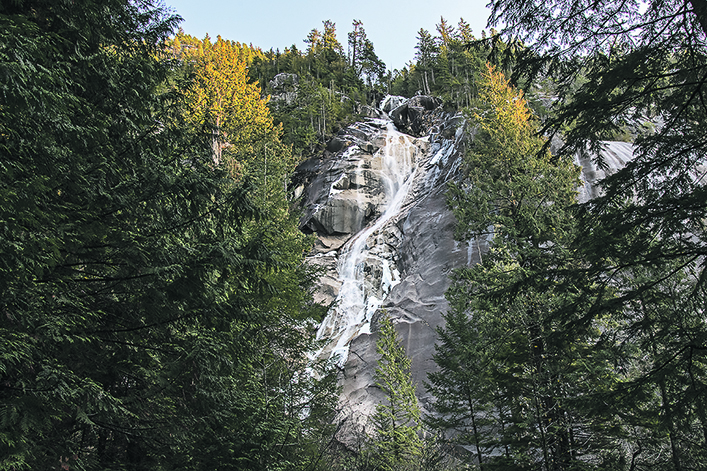
The highway then curves around Stawamus Chief Mountain, among the largest granite monoliths in the world. Famous for rock climbing and hiking, it’s an impressive sight from ground level as well.
The Sea to Sky Gondola is close by. From sea level at Howe Sound, it goes up the mountain 885 metres to Summit Lodge, with sweeping views and a restaurant. A 100-metre-long suspension bridge crosses a gorge and connects to the extensive network of summit walking trails. Some are open in winter for hiking, skiing, and snowshoeing depending on snow conditions.
Howe Sound ends at the small city of Squamish at the mouth of the Squamish River. Its tourism slogan is “Hardwired for Adventure” because of the wealth of nearby outdoor activities such as hiking, biking, rock climbing, kayaking, and skiing. A special attraction in early winter is the phenomenal gathering of bald eagles along the river, which we highlighted in a previous column.
Besides photographing eagles, our most memorable adventure in Squamish was taking a flight-seeing trip with Sea to Sky Air. Our pilot, David, took us up in a Cessna 172, and only a few minutes after leaving the runway we were in complete wilderness soaring over white-capped peaks and glaciers of the coastal mountains. We swung around to the end of Howe Sound then over Stawamus Chief Mountain and the gondola, and the city backed by the peaks of Garibaldi Mountain.
An unexpected bonus was seeing a Pilot’s Glory, an unusual weather phenomenon that can occur on the side of a plane away from the sun. A cloud’s water droplets scatter sunlight in a colourful circular pattern, looking somewhat like a rainbow but smaller and shaped like a bull’s eye.
Squamish to Whistler is only a 60-kilometre drive but a world away. We leave the sea behind and climb to 675 metres at Whistler Village. One reason this has become a world-famous ski resort is that the top of Whistler Mountain averages a whopping 11 metres of snow per year.
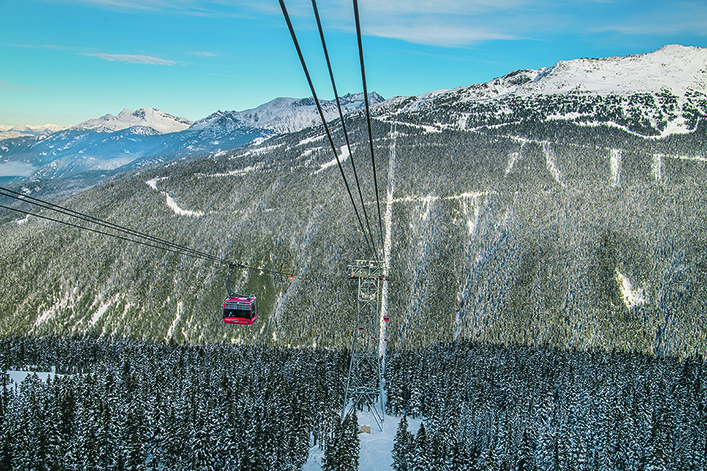
You don’t have to be a skier to enjoy Whistler, since skiers and sightseers use the same gondolas. From Whistler Village, one gondola goes up Whistler Mountain and another up Blackcomb Mountain. Both offer amazing views but the highlight is the Peak-2-Peak gondola at the top that connects Whistler and Blackcomb Mountains, 4.4 kilometres apart. Travelling 436 metres above the valley floor, it’s the highest lift of its kind in the world. Some gondola cars have glass floors so we can look straight down at the valley far below. It also holds the world’s record for the longest unsupported span of cable, at slightly more than three kilometers.
Whistler is also home to the Squamish Lil’wat Cultural Centre, named for the two First Nations cultures in this area — the Squamish and Lil’wat. The striking glass-fronted building incorporates design elements from traditional longhouses and earth dwellings. Hourly tours start with a welcome song by a traditional drummer. A guide then takes visitors through the exhibits, explaining the significance of items such as the 40-foot cedar canoe, totem poles, traditional dress, and artwork. A special aspect of the tour is that the guides are considered cultural ambassadors who share their own stories and first-hand cultural experiences.






